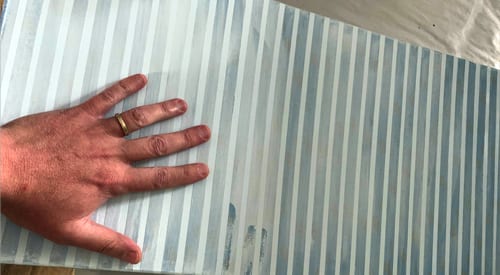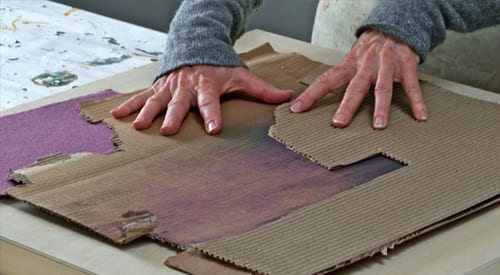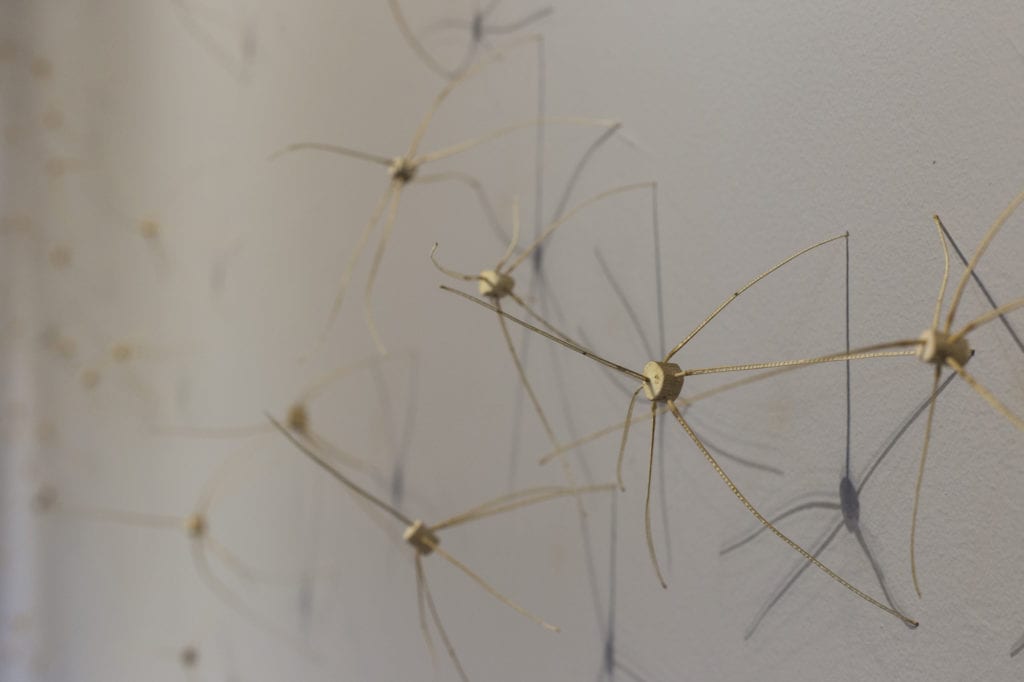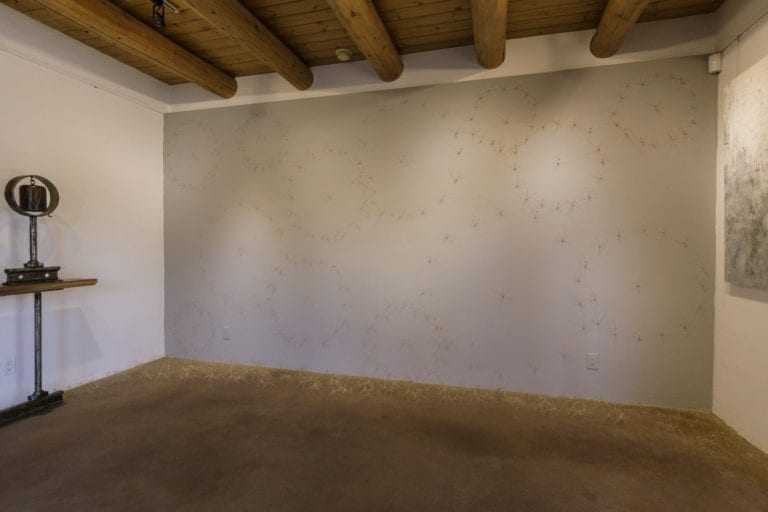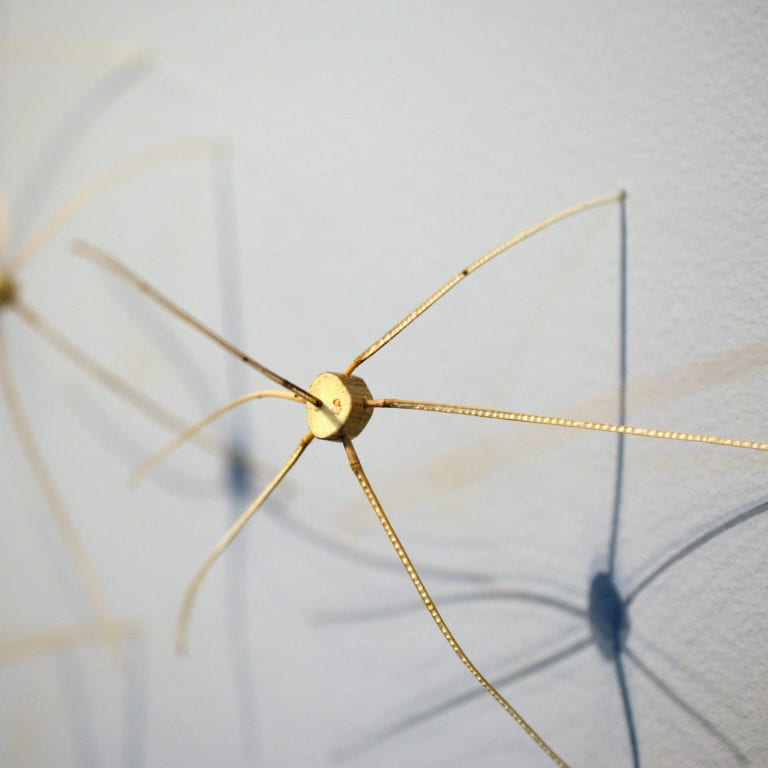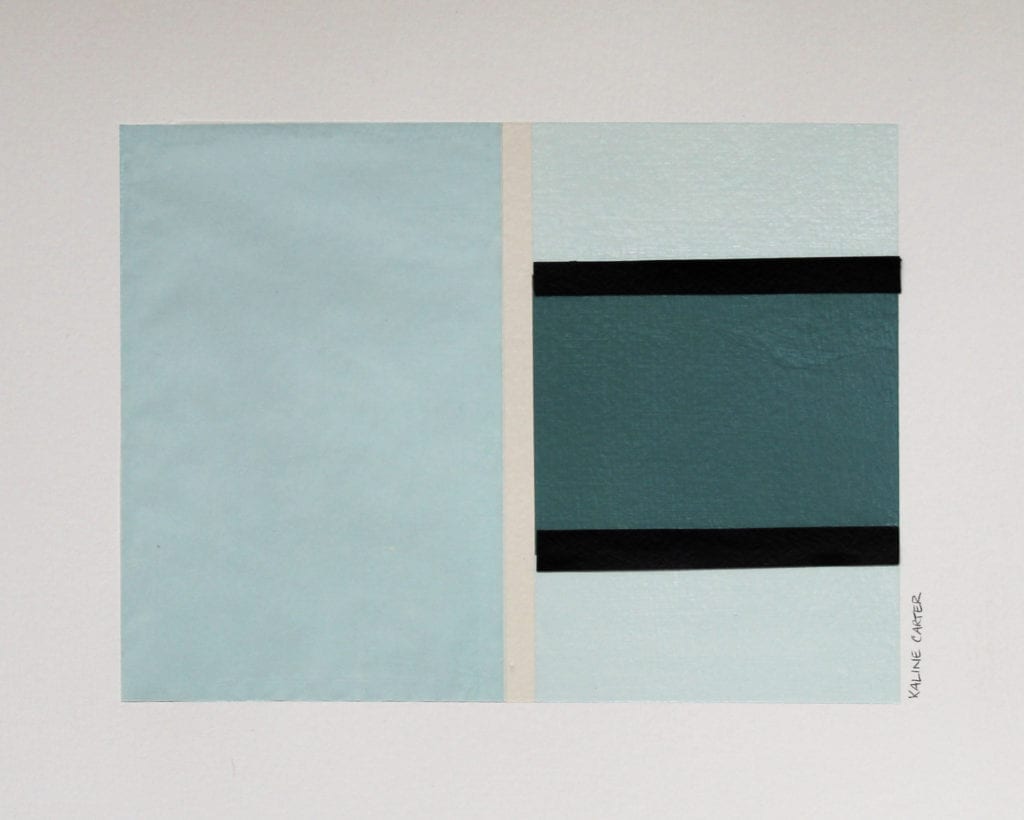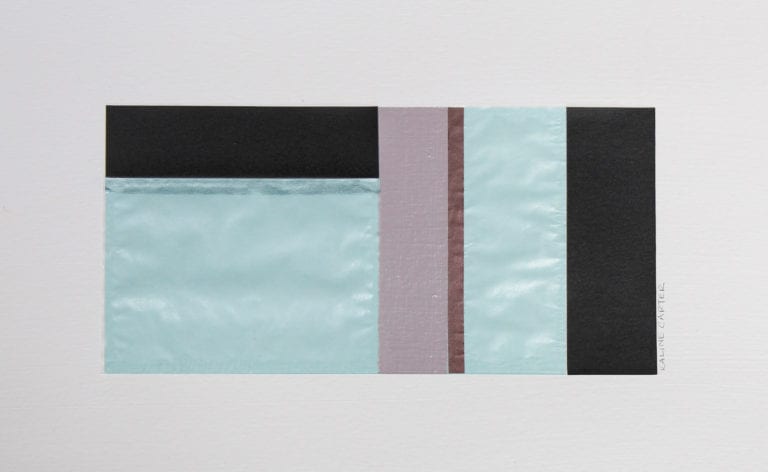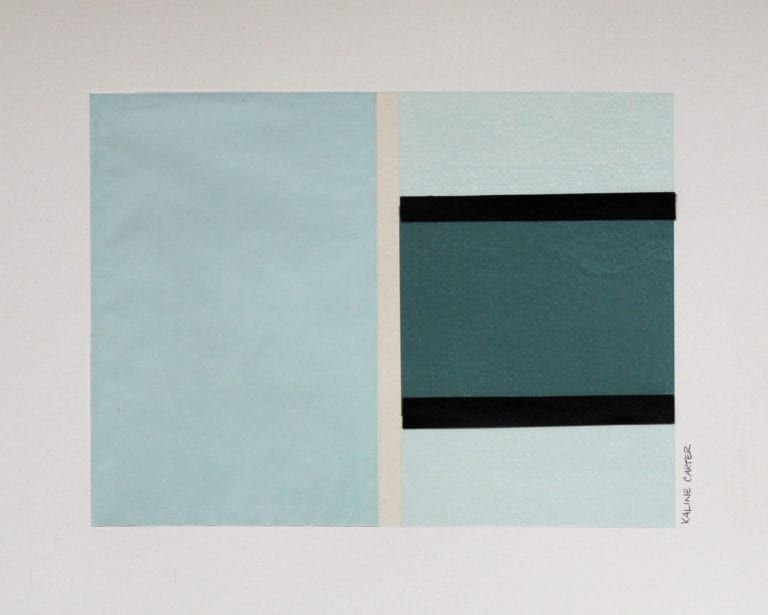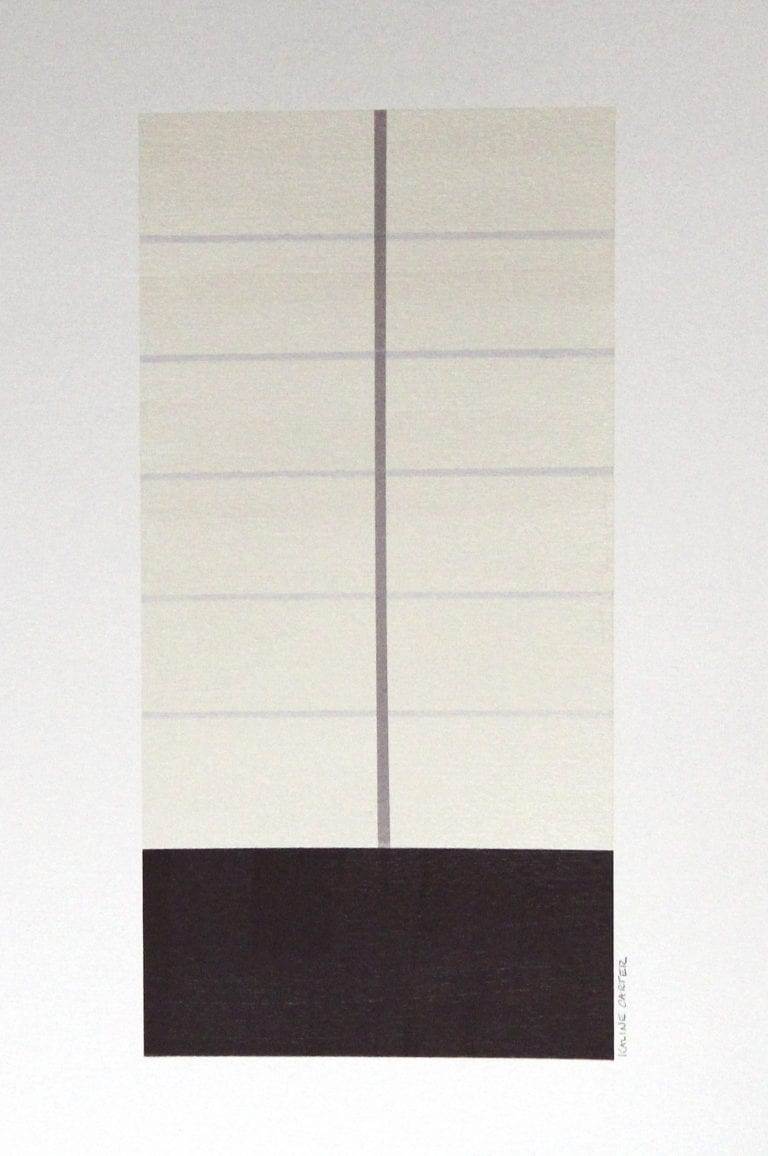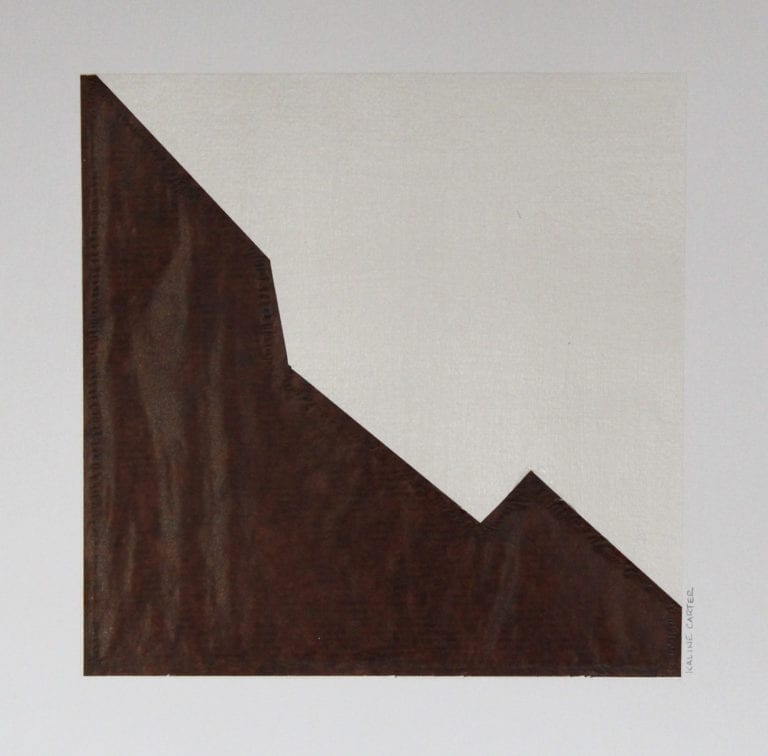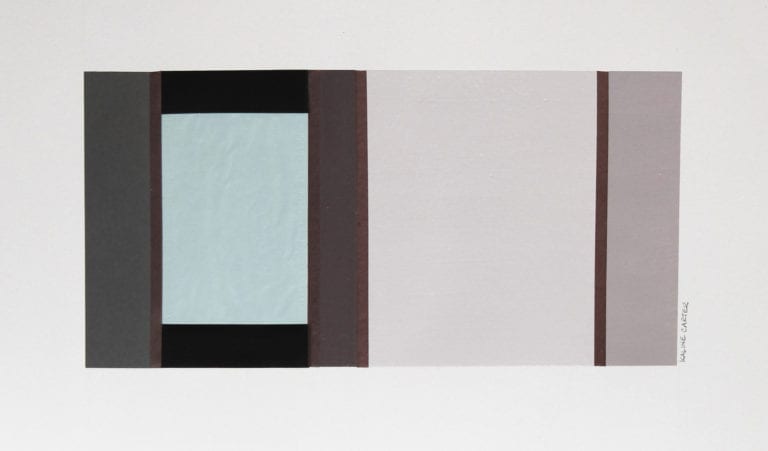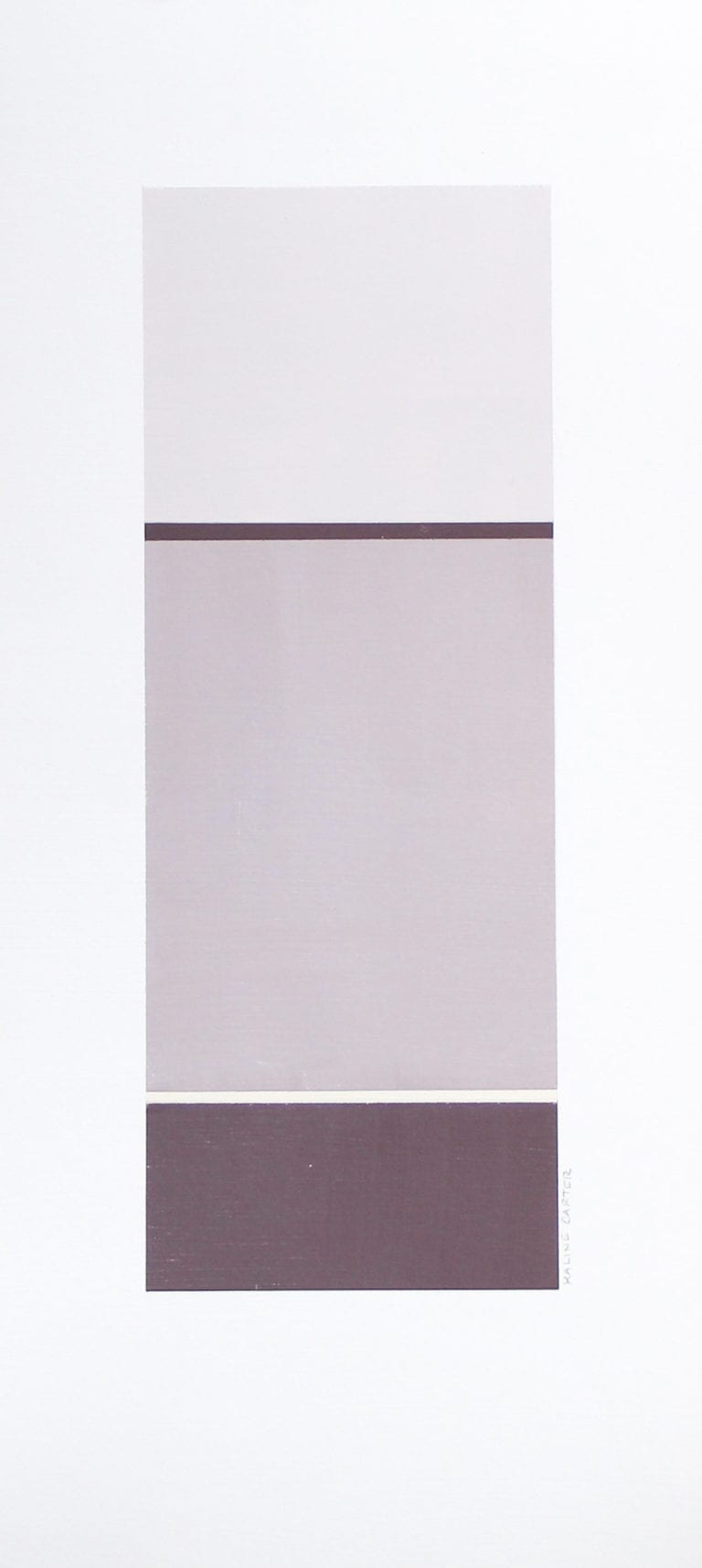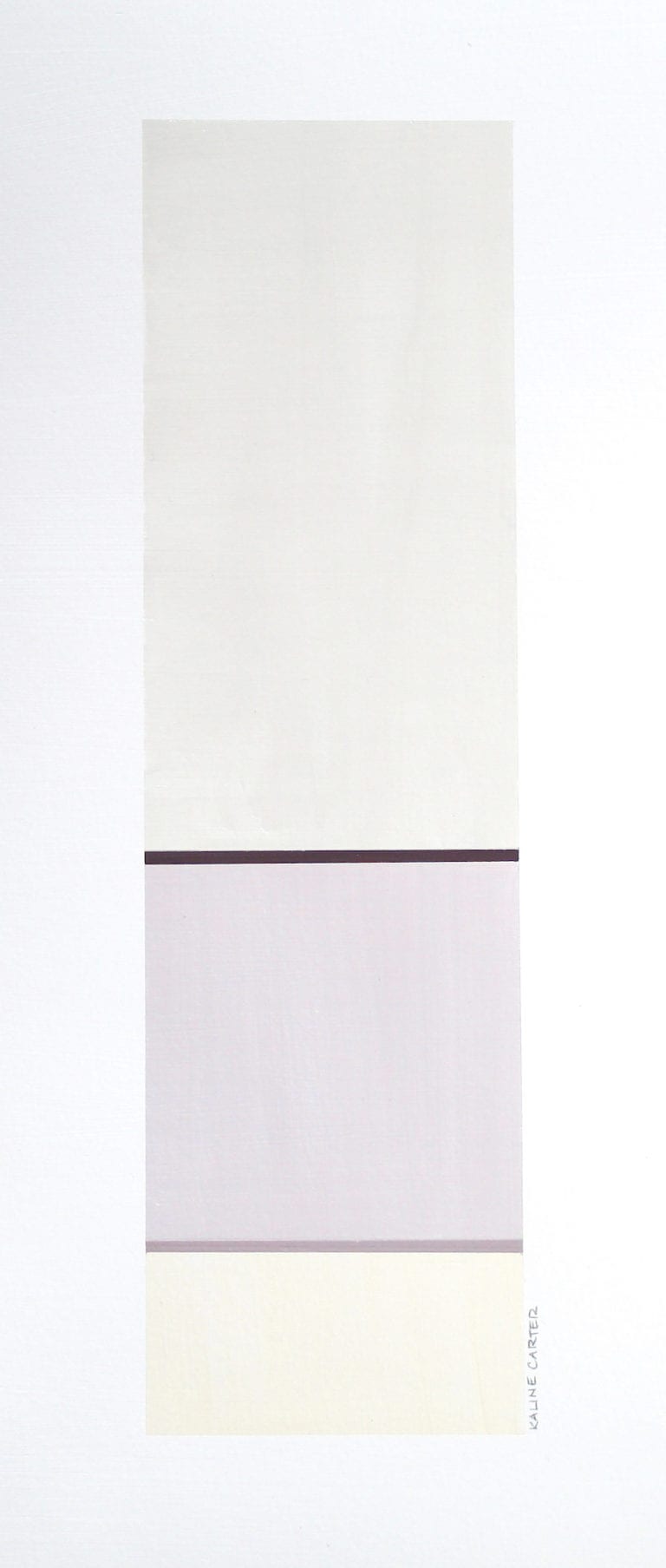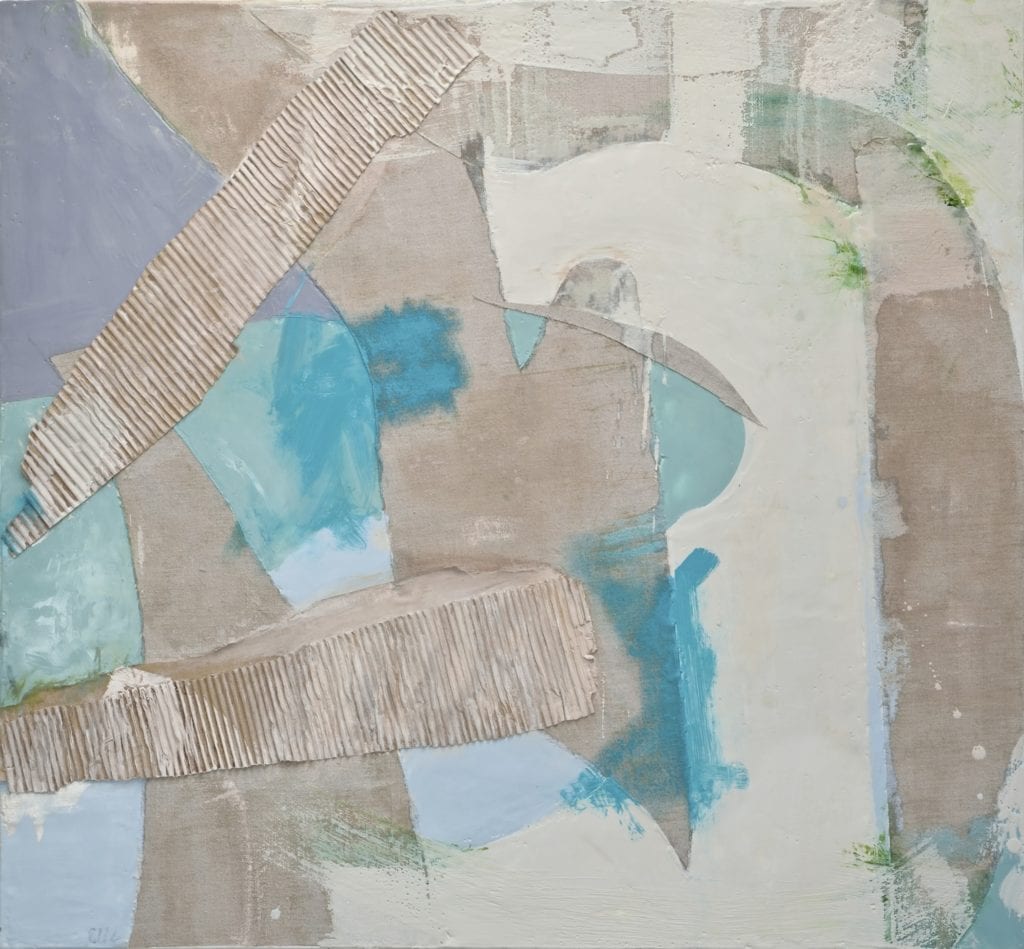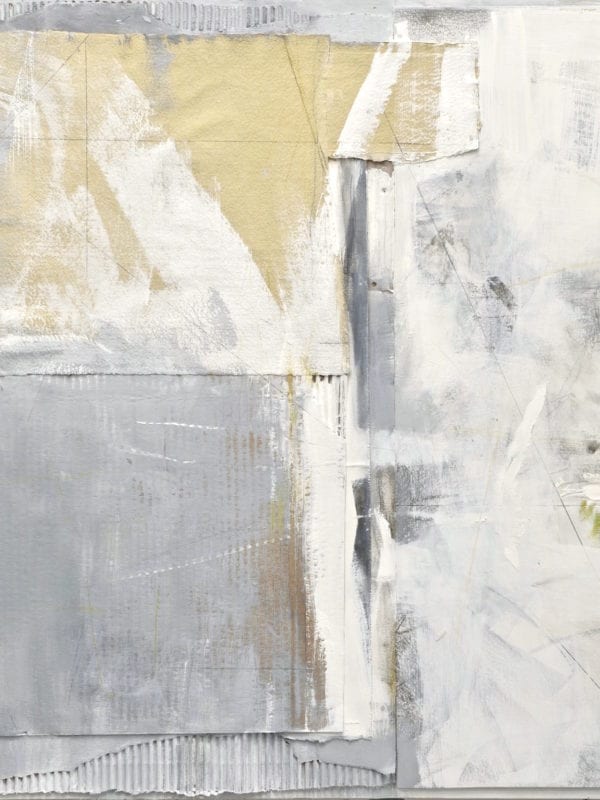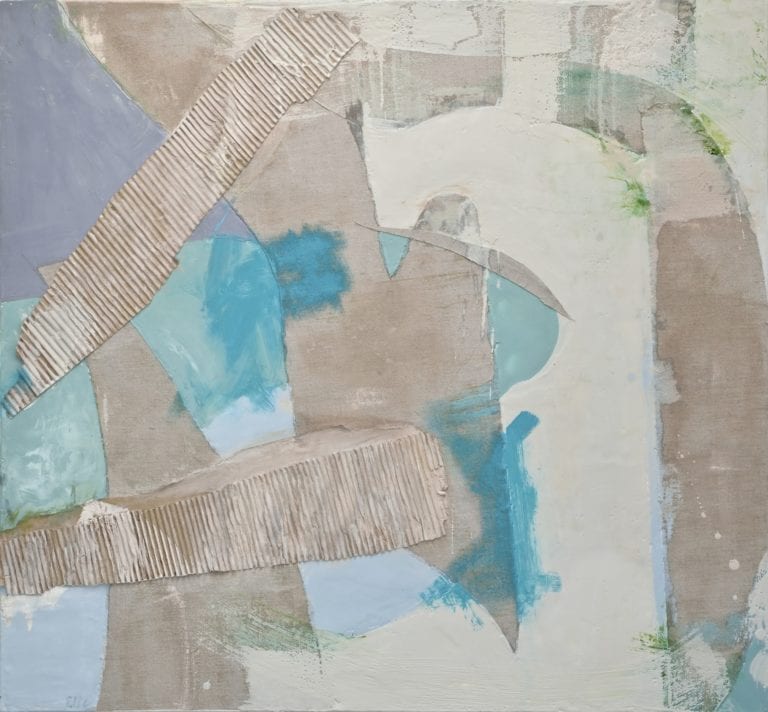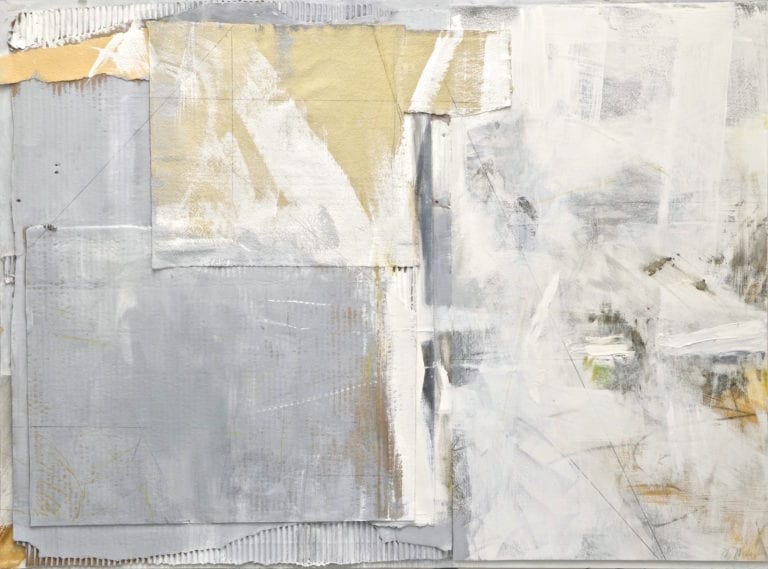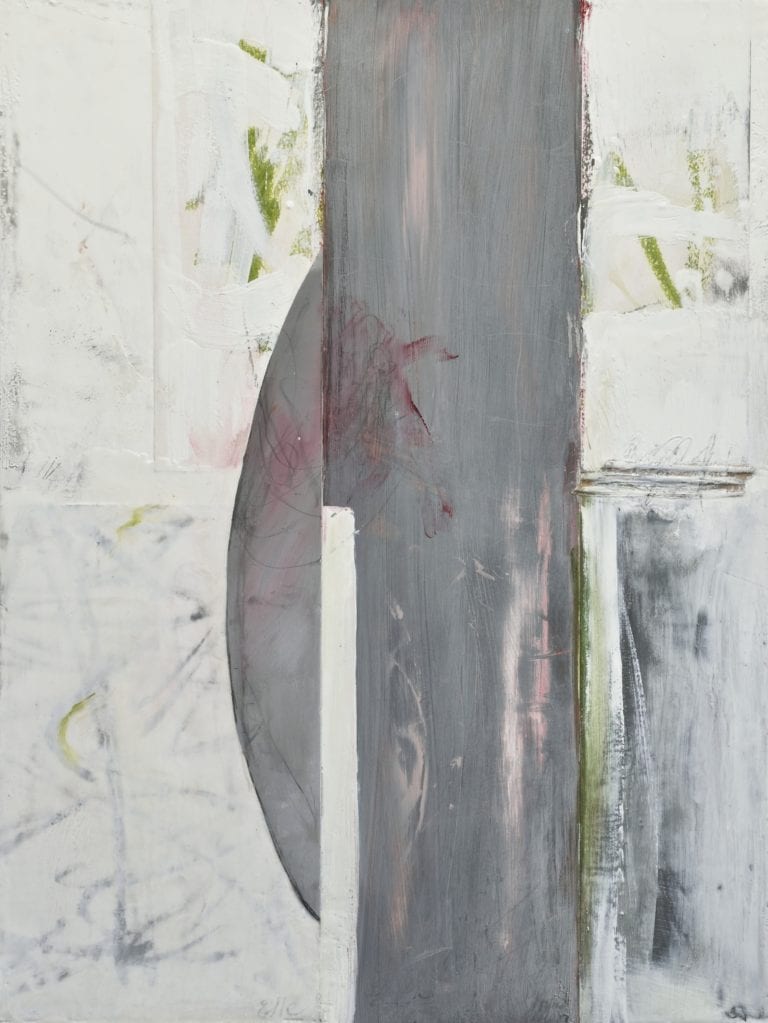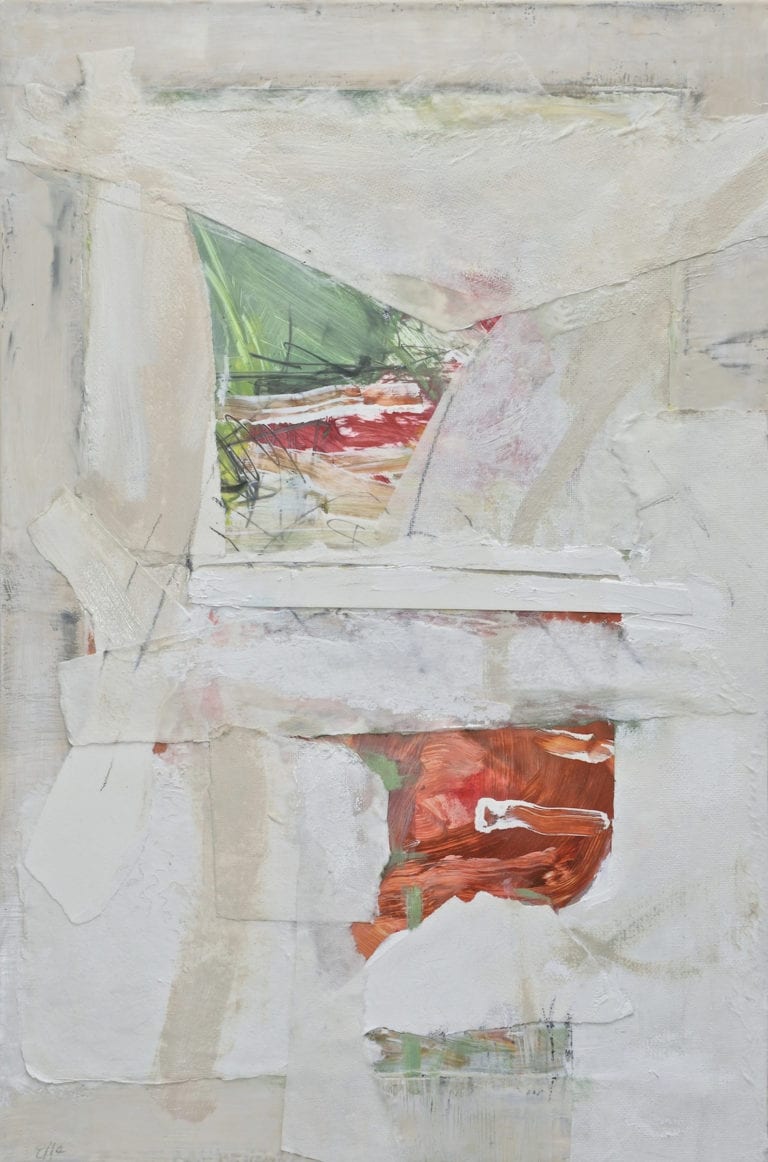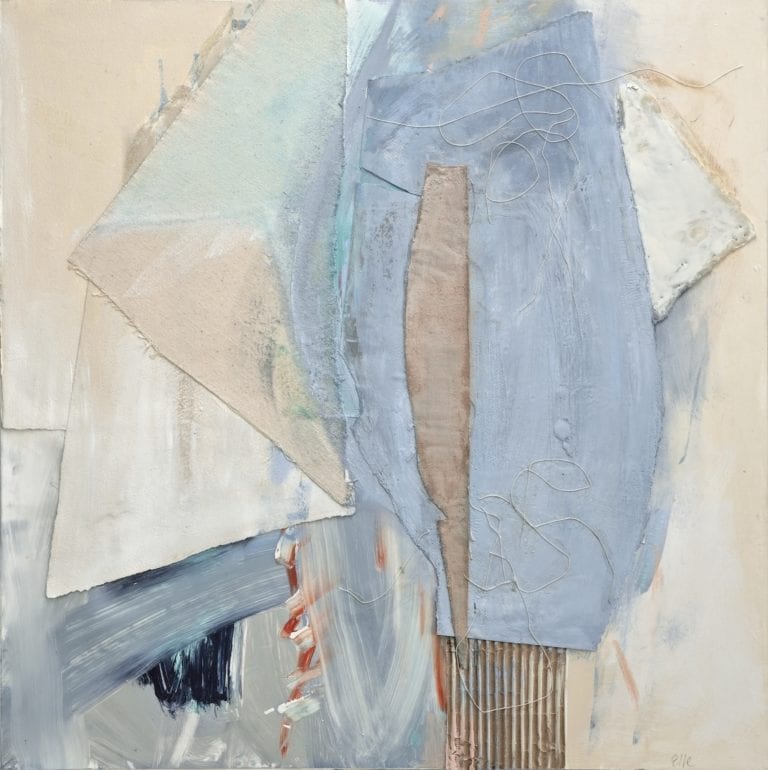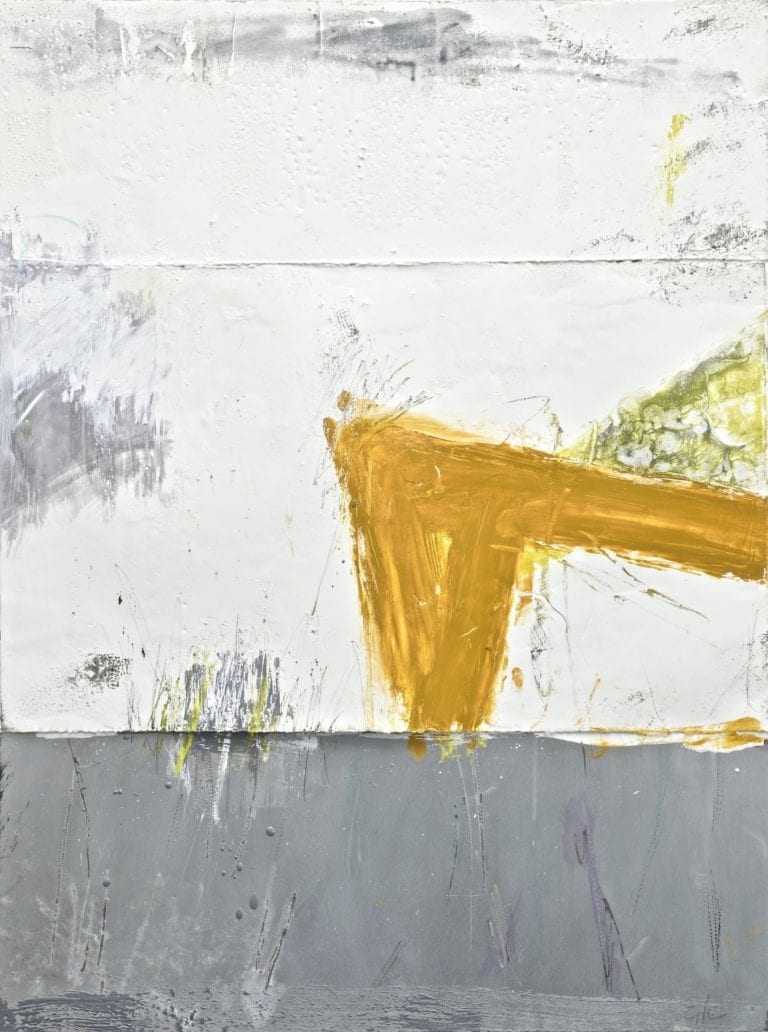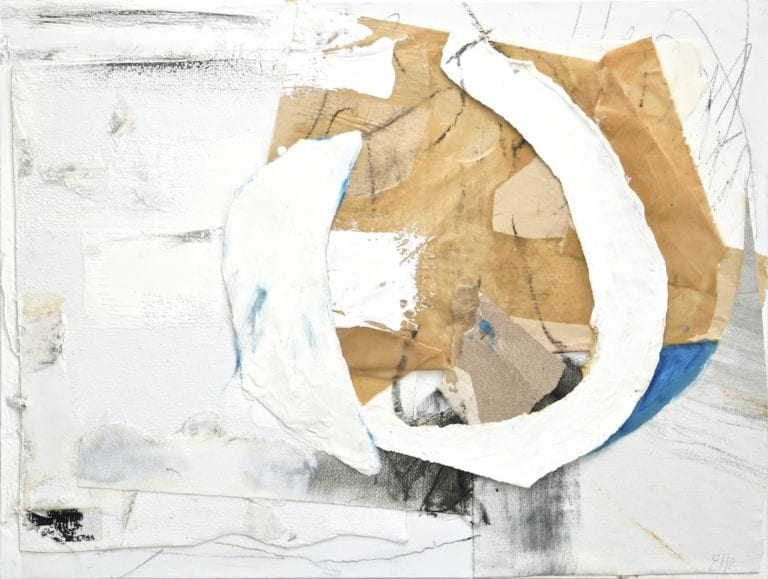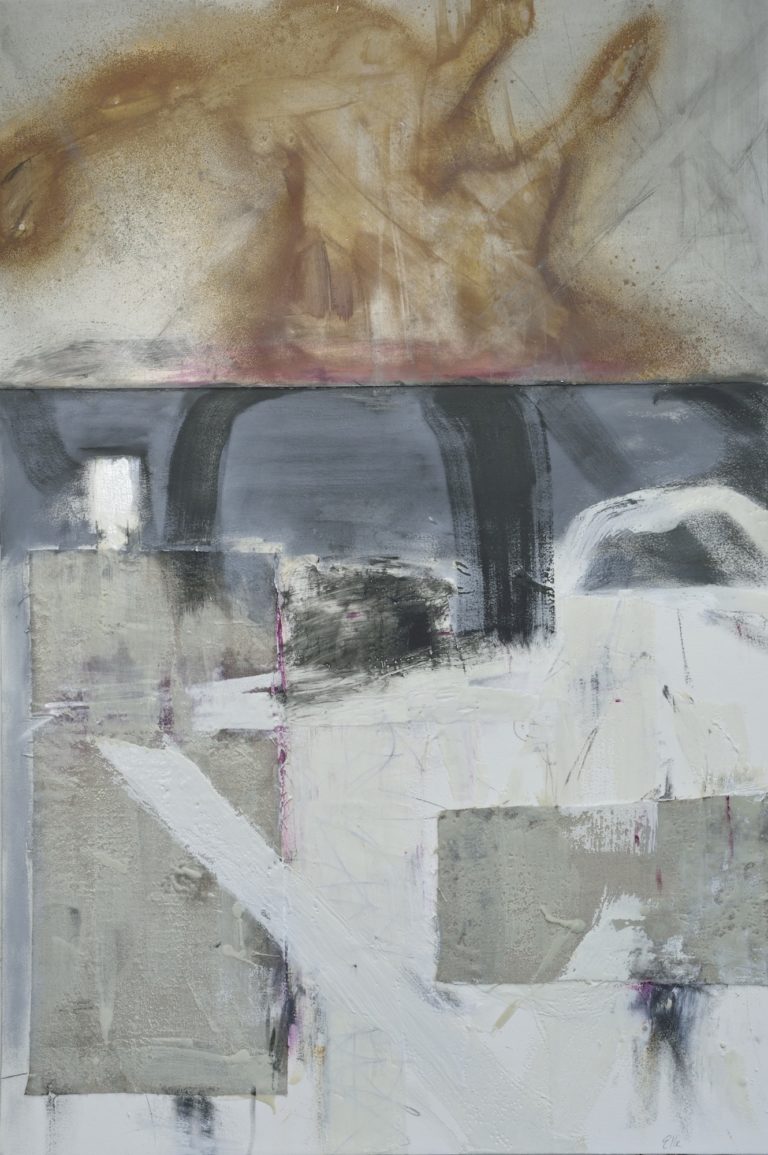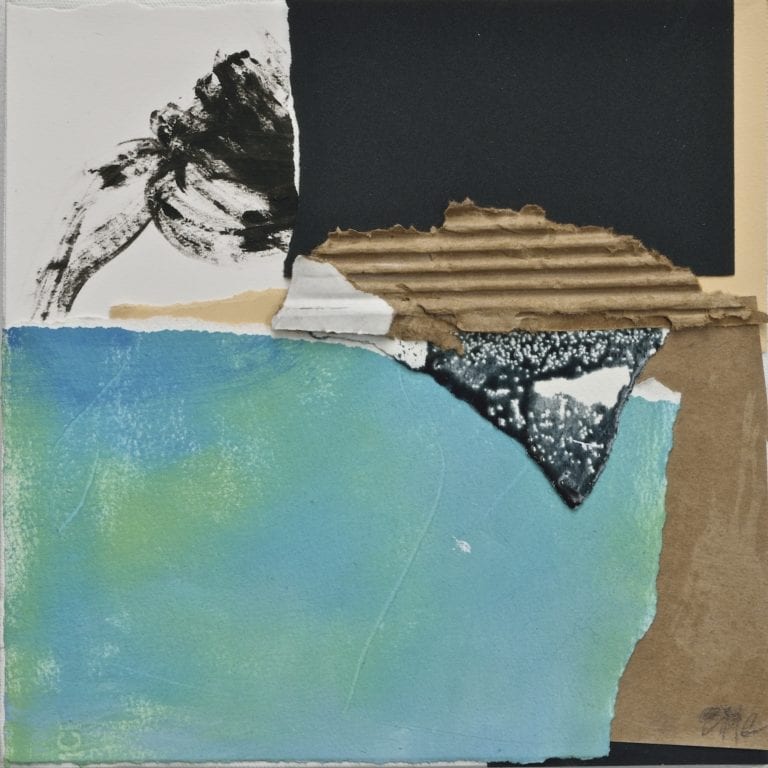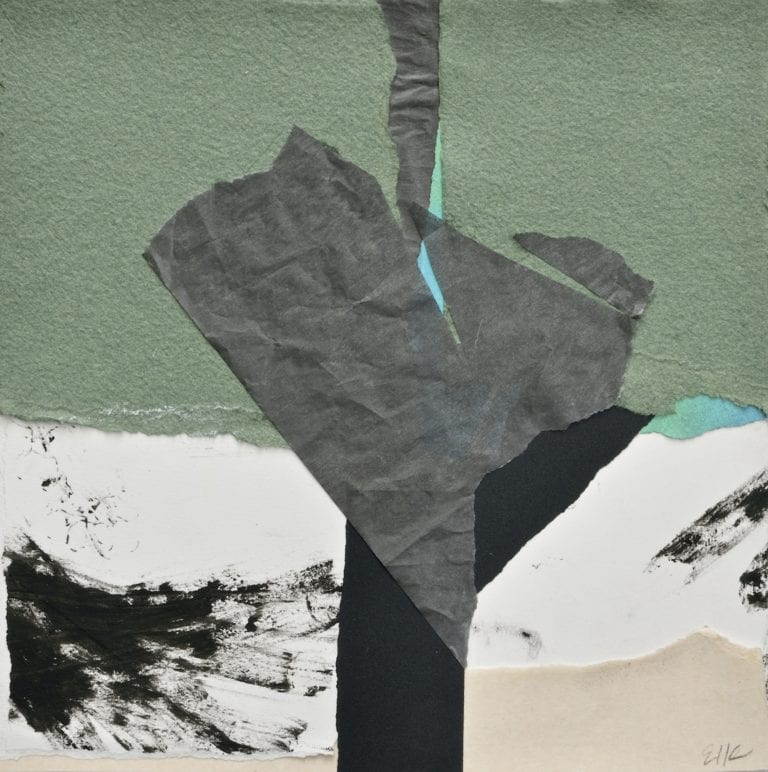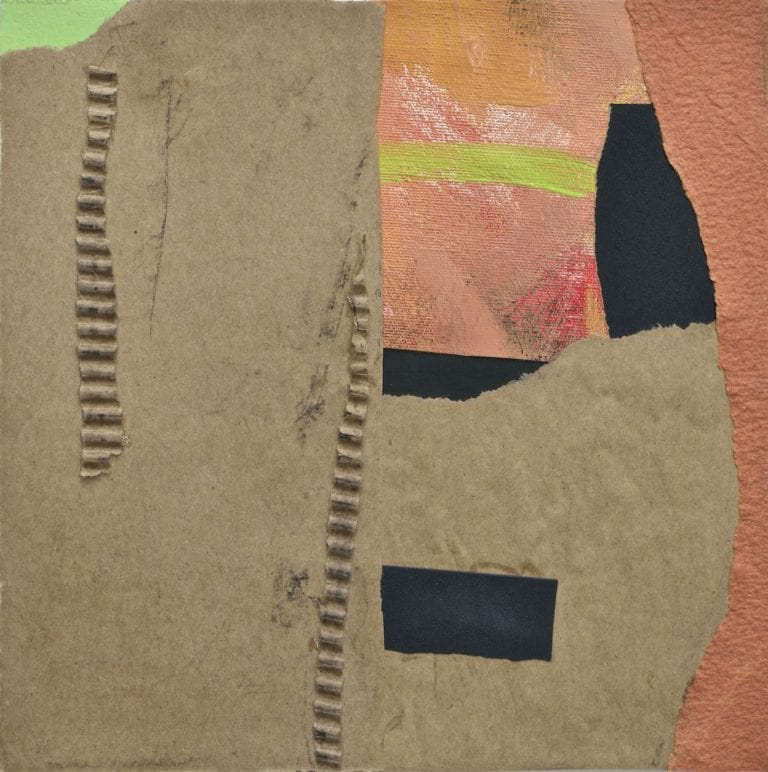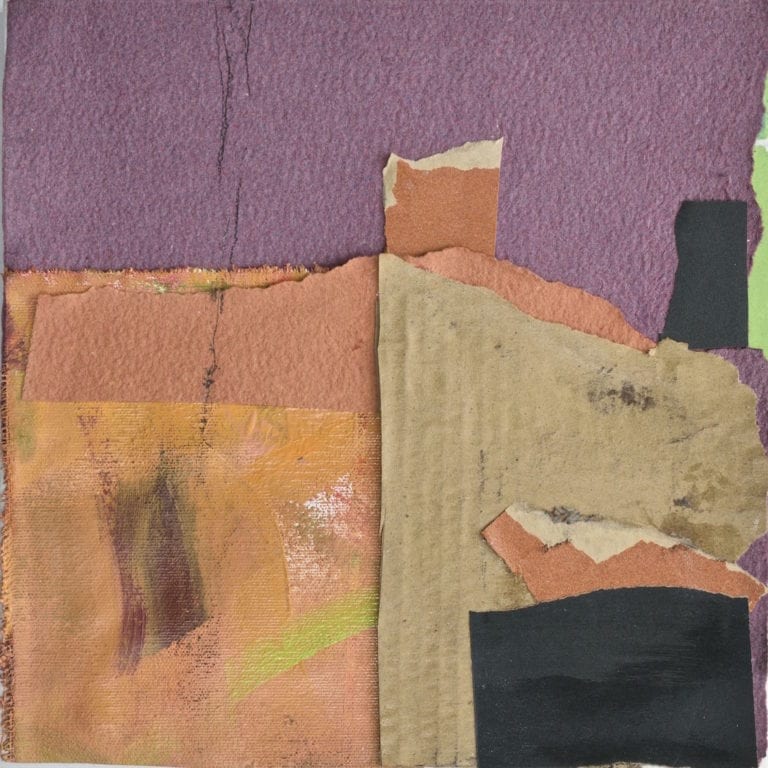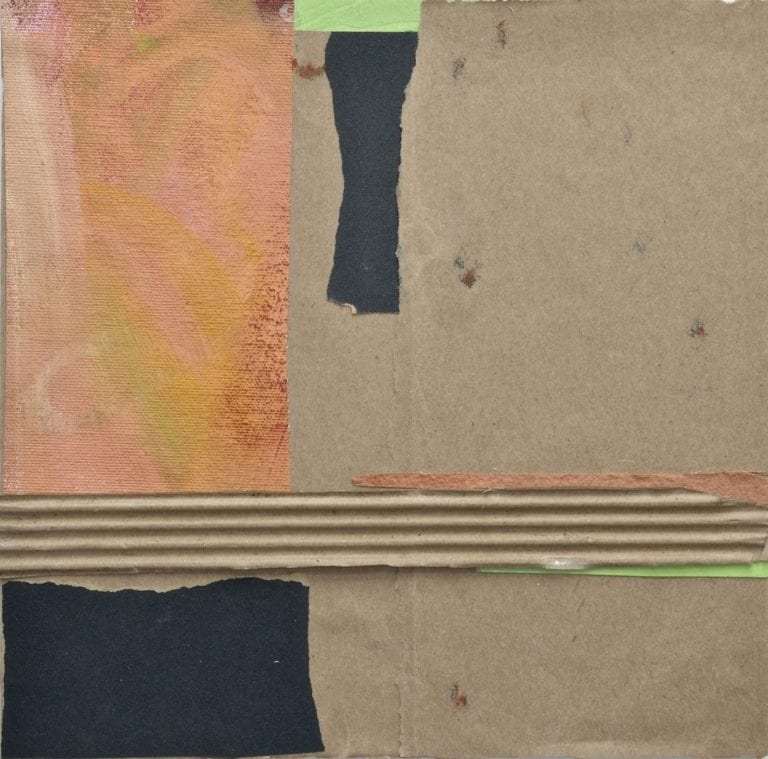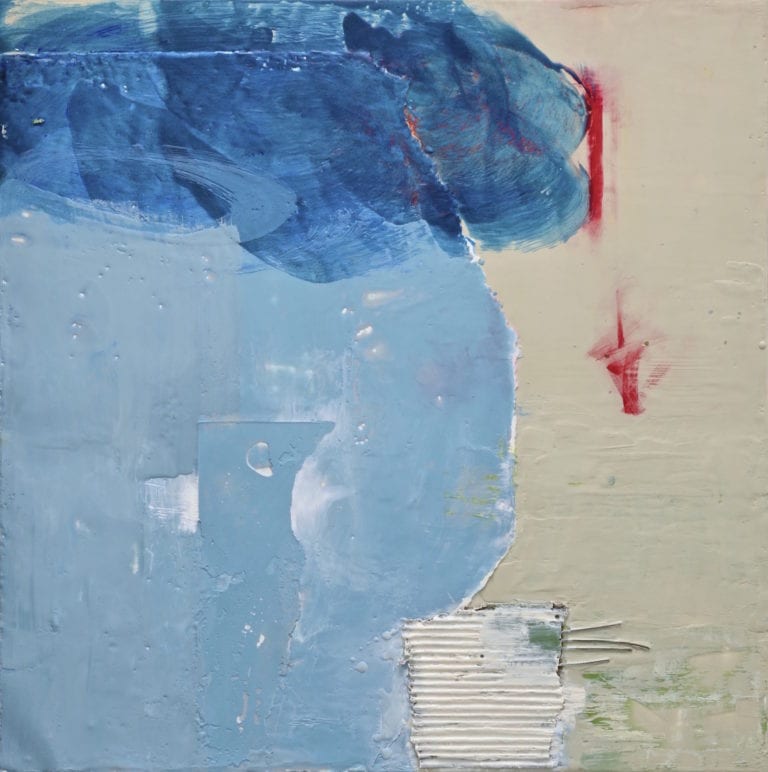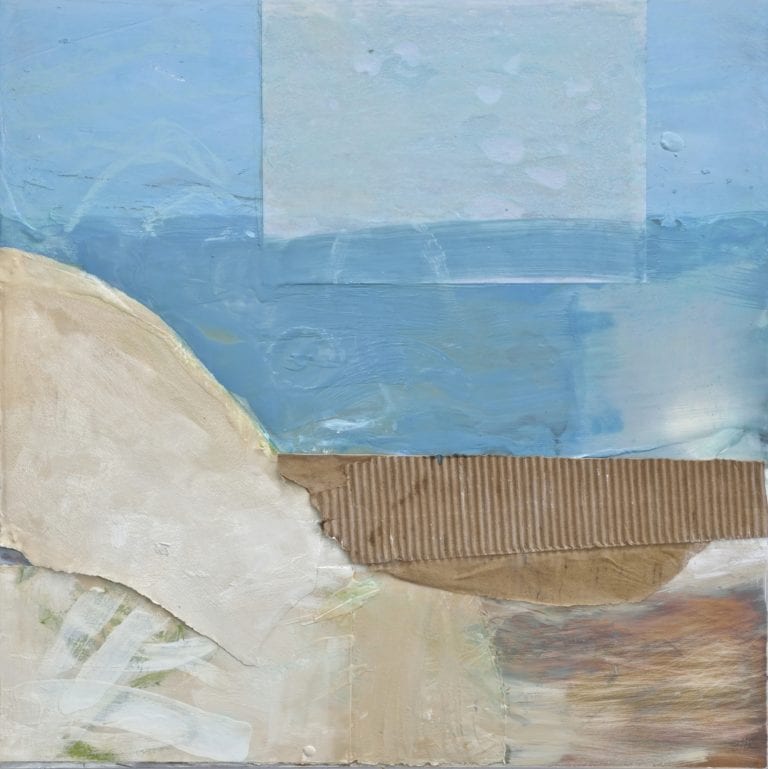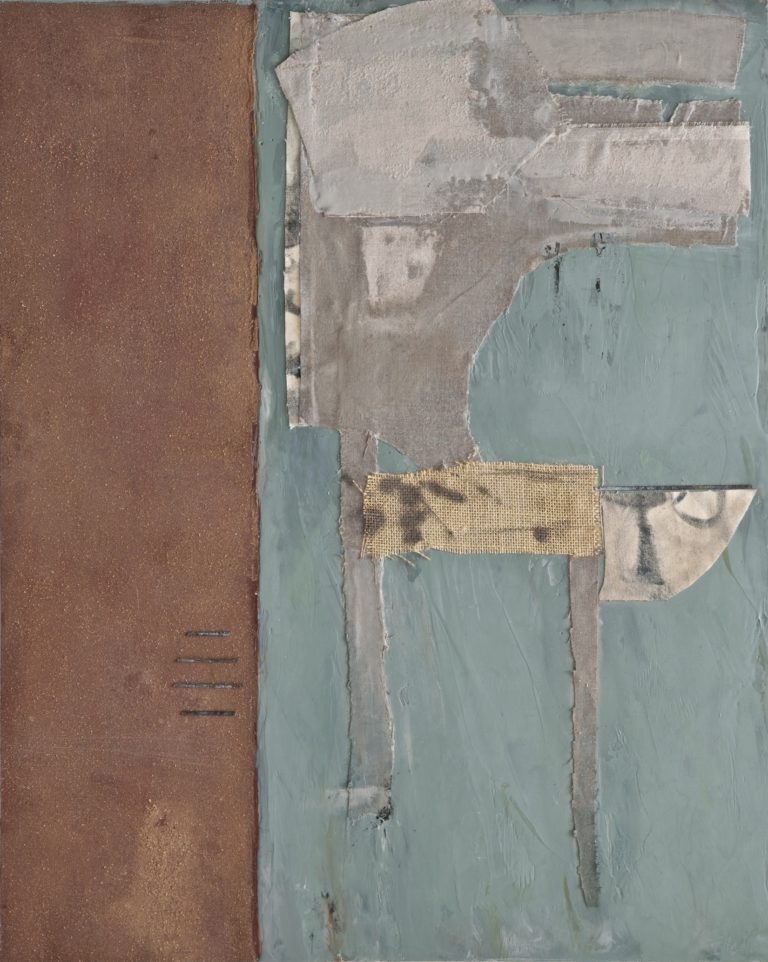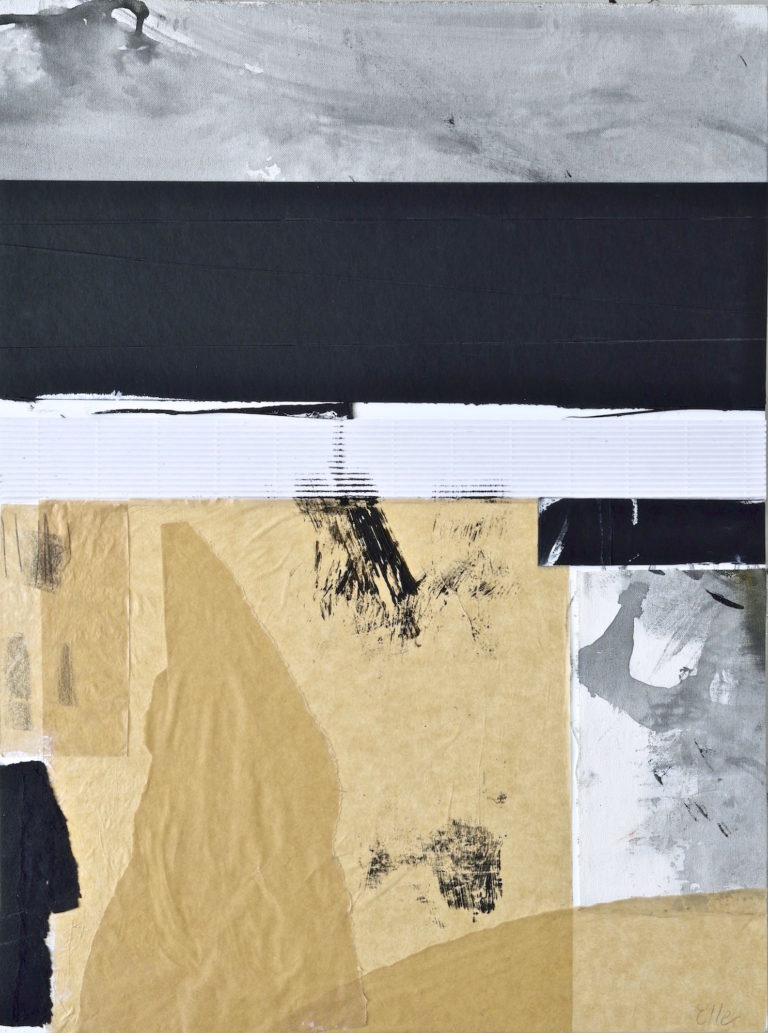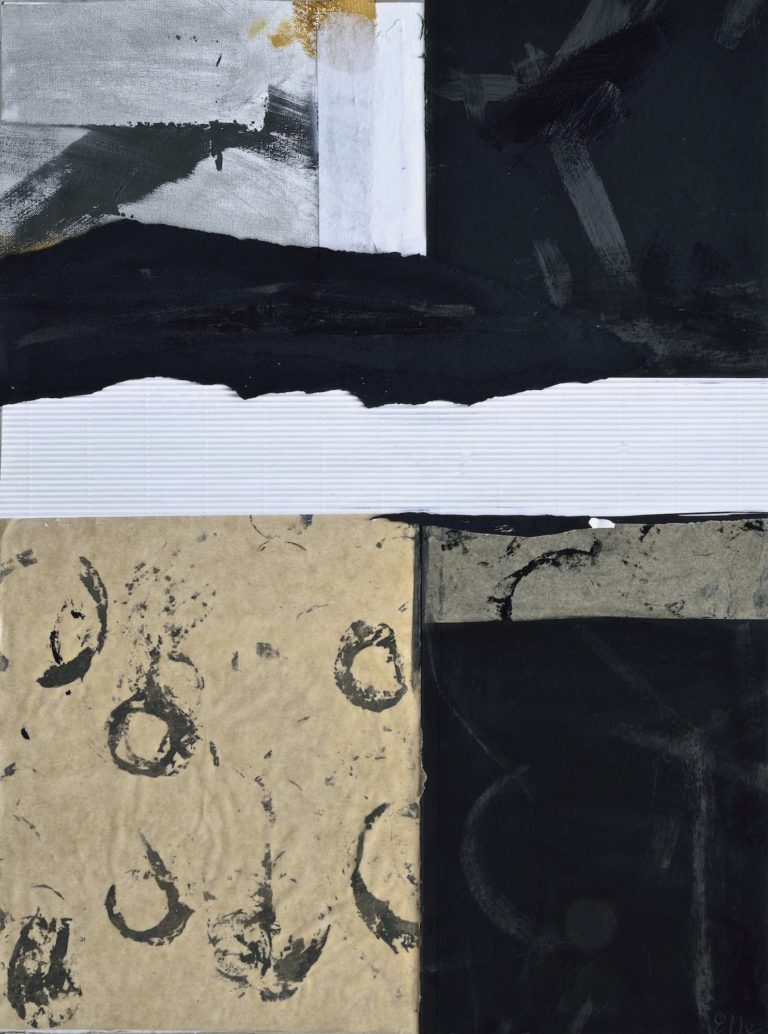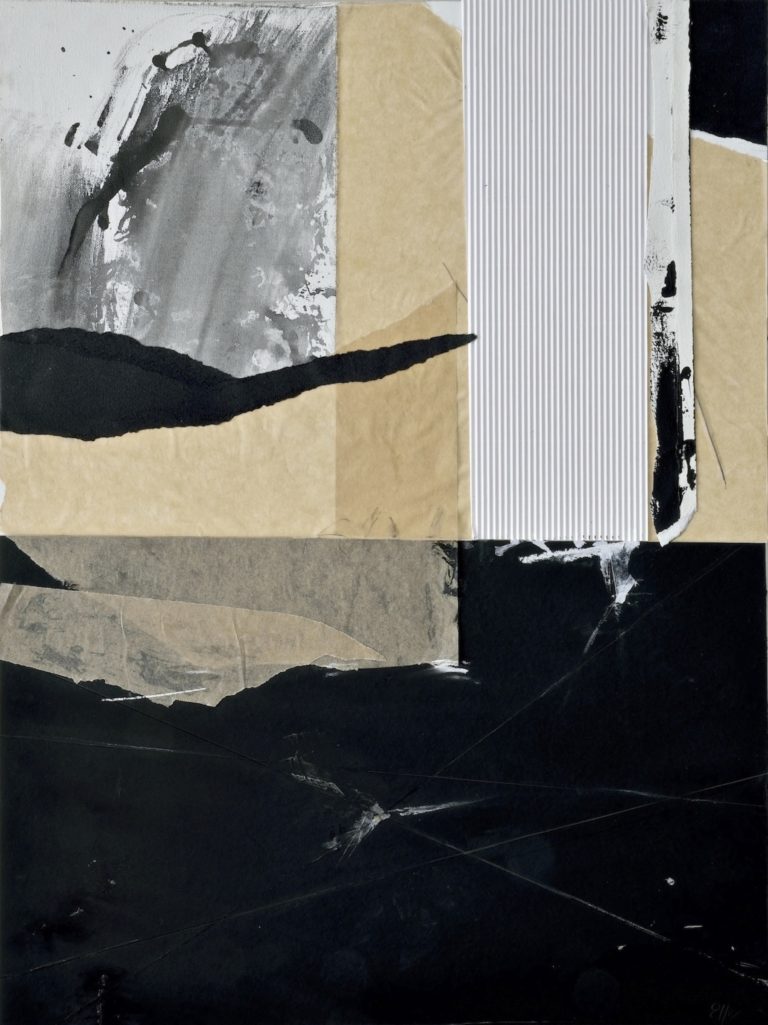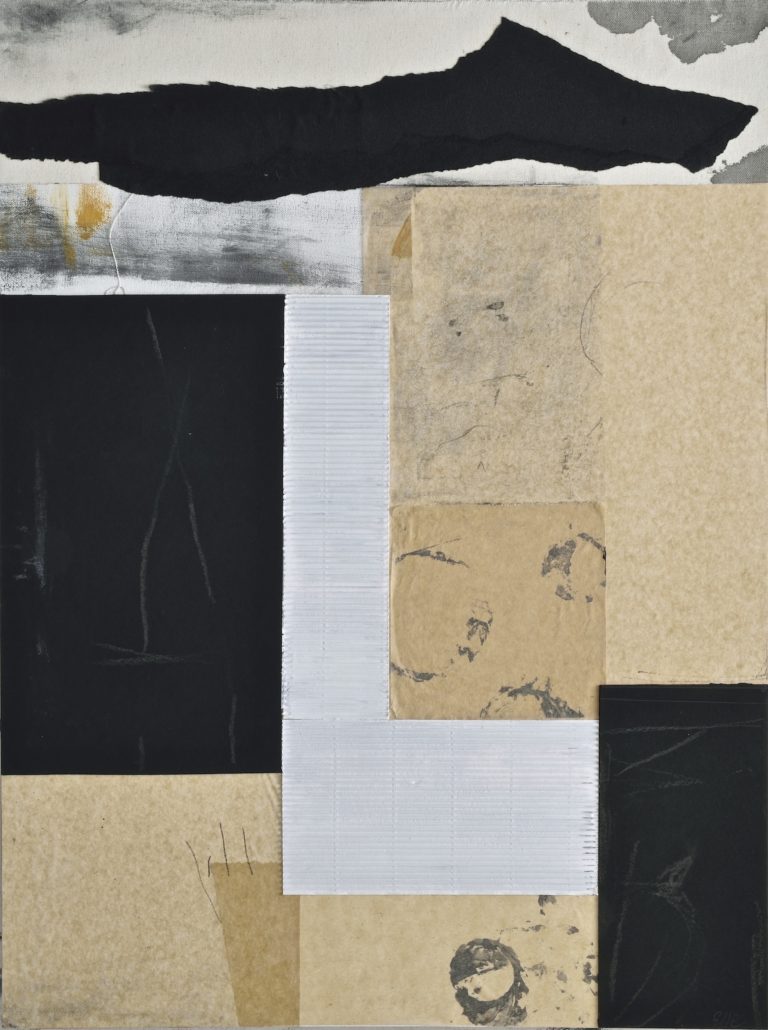In contrast to marquez’s networks of raw material, Kaline Carter’s aesthetic is of urban origin. Inspired by architecture from Los Angeles to New York City, his gridded, color-field multimedia paintings also include glassine paper, black sandpaper, and vinyl reflector tape. A media consultant with Collector’s Guide and Southwest Art, travel is a big part of Carter’s life.
Yet his relationship with art has been volatile over time. He left an undergraduate program he started at Parson’s in New York and ended up years later with a MBA at University of New Mexico. For a long time he abandoned the artistic ambitions of his youth, until a mentor (and client), Anne Crouch of Amarillo, came into his life and literally made him paint if he wanted her to listen to a pitch. When she passed away in 2017, he realized he had no more time to waste, and since, he spends every free moment in his obsessively organized Albuquerque studio, making straight lines and gridded color fields in the tradition of Josef Albers and Agnes Martin (a lot harder than one may think).
Carter’s series is both a continuation and a departure from his bold-color grid paintings. Using far more ephemeral materials like sandpaper, but still incorporating his smooth use of diluted acrylics, he’s aiming to capture the architectural details he witnessed during a trip to New York City.
“It was a quick trip but I kind of fell back in love with the city,” he says. “I just had these quick views of things—the way a shadow falls across the edges and textures of a building—moments that will never be exactly the same again and that gradually change with the light and seasons.”
Carter’s interested in using sandpaper to capture the earthy, grainy textures and gradients of light and shadow, which shift our perception of color. Trending to more natural and neutral tones than his more typical use of bold color, these geometric expressions indicate that even in architecture, the temporary nature of existence prevails.






